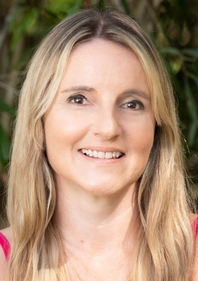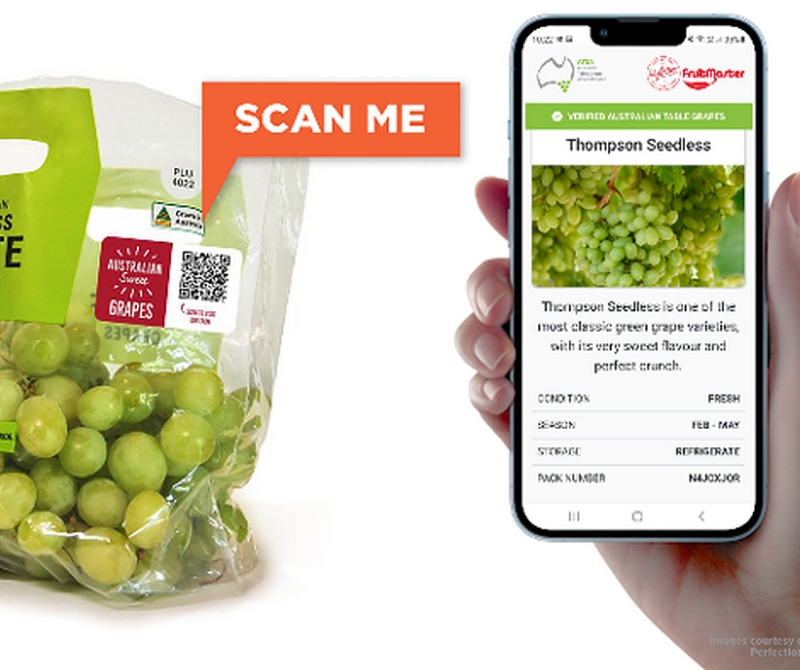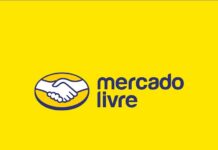Nerida Kelton
- ThermoShield temperature monitoring system
- Inghams Waitoa free range butterflied chicken
- ATGA Table Grapes project
- JBS & opal dunnage for exported meat
- 2DBarcode labelling in Woolworths meat range
Food Loss & Waste statistics in Australia are simply staggering. 7.6 million tonnes of food are wasted across the supply and consumption chain each year, costing the economy $36.6 billion. This waste equates to 312kg per person, one in 5 bags of groceries, or between $2000 and $2500 a year that is dumped in the bin and ending up in landfill.
With the issues covering all parts of the value chain from paddock to plate everyone needs to play a role. There are many ways that Food and Beverage Manufacturers can play a role, but one way is through the packaging they design and use.

Packaging has always played a critical role in containing, protecting, preserving and transporting a product from point of production to the household. But now, more than ever it needs to ensure health and safety, extension of shelf life, tamper evidence, traceability, recall capabilities, temperature monitoring and the ability to minimise food loss and waste wherever possible across the value chain.
The good news is that we are starting to see more packaging that is intelligent, intuitive, accessible, inclusive, sustainable and offering lower environmental impacts.
So many of the winners in the 2022 Australasian Packaging Innovation & Design (PIDA) Award have designed packaging that can provide significant benefits to minimise food loss and waste from paddock to plate. It is extremely encouraging to see that Save Food Packaging is increasingly on a packaging technologists radar and that Food and Beverage Manufacturers are now designing packaging that can save food.
Thermochromic dye technology, temperature monitoring systems for food and beverage, 2DBarcodes for meat, traceability systems for exported premium grapes, accessible & inclusive ready meals for chicken and dunnage for exporting meat are just some of the new Save Food Packaging designs that stood out at the 2022 PIDA Awards.
ThermoShield temperature monitoring system
ThermoShield, developed by Caps and Closures, is an optical system, meaning the packaging will dynamically change its colour appearance at a pre-selected temperature switching point.
Based on thermochromic dye technology that changes colour as the environment changes, the system allows for more than two colour changes (e.g., black to orange to red) as the packaging gets warmer, and the reverse as the temperature drops through the selected switch temperatures. The design can also allow for ‘locking’ of the colour when the temperature rises above a set temperature, changing colour permanently.
This feature finds application where a particular temperature renders the contents unusable. This can be especially useful in tracking cold chain (refrigeration required), perishable food or beverage, to extend display and home refrigerator shelf life, which ultimately reduces food waste. ThermoShield is useful in transport and warehousing because the over-temperature stock can clearly be seen.
ThermoShield ensures that the packaging can alert logistics managers, warehouse staff and consumers to instances where temperature sensitive products are being, or have been, exposed to higher or lower than acceptable temperatures.
Traceability of any product is enhanced when temperature excursions are detected, and the level of resolution can be macro (container temperature), down to discrete (the individual product) packaging. Using the locking function available, a record of overheating is permanent and will be identified after a long road or sea shipment.
Stock can easily be sorted to remove damaged product prior to warehousing or stocking shelves.This innovative technology has the potential to significantly reduce food loss and waste due to incorrect temperature control at various stages of the logistics path from paddock to plate.
Inghams Waitoa free range butterflied chicken
The community of farmers behind the Waitoa brand are at the forefront of free range, Toitū Carbonzero™ certified chicken farming in New Zealand. Here, respect for nature comes naturally and sustainability drives decisions.
The Inghams Waitoa Free Range Butterflied Chicken is a pre-marinated product that transforms the consumer experience and eliminates the need for consumers to handle raw chicken and marinate themselves, which can often be a source of food waste. The pre-marinated range comes with an easy open tear notch, a user-friendly cooking experience and the ability to freeze the product. These features mitigate waste in households which accounts for approximately 50% of all food waste.

Additional Consumer engagement and information is included on the pack via instructions for storage and cooking, a callout that the chicken can be frozen and scannable QR code accesses meal inspiration ideas.
The packaging has been developed in partnership with Sealed Air NZ using CRYOVAC technology that increases shelf life by 40% to 14 days. The packaging incorporates 80% recycled content and is Australasian Recycling Label (ARL) return to store recyclable.
ATGA Table Grapes project
To address the need for greater transparency within the industry, the Australian Table Grape Association (ATGA) worked with Result Group and Perfection Fresh to launch a new traceability system for export table grapes.
Since grapes are highly sensitive to impact due to their relatively thin skins, they must be handled with appropriate care. High temperatures and low humidity cause water loss from the grapes and stems, which ultimately increases the rate of deterioration which in turn reduces shelf life.
Maintaining the cold chain with proper cooling, storage and monitoring can extend the shelf-life of grapes and ensures minimal product waste. In addition, active packaging was developed that comprises of releasing/emitting properties to inhibit spoilage caused by microbes. The packaging not only protects the table grapes but also extends shelf-life.
Each pack has a unique identifier QR code that provides a convenient and actionable way for consumers to access real-time information about the product. The code can be scanned by a smartphone and provide information about the product’s origin. The applied unique serialised GS1 Digital Link-enabled QR code allows the automated collection of data from paddock to plate.
The Active Digital Identity (ADI) embedded in the QR code label ensures each item is unique and traceable; an important innovation in combatting food fraud. Each label carries critical international traceability data, based on GS1 standards, covering consumer pack units, cases and pallet codes, as well as time and temperature logging, which are captured through the EVRYTHNG Product Cloud database. Using GS1 standards future proofs the table grape industry for evolving traceability regulations in export countries.
Real-time temperature sensors are placed in all cartons and shipping containers for temperature monitoring. With a temperature monitoring system, Perfection Fresh can easily track, control, and regulate a products temperature in a specific environment.
The sensors log temperature levels at every step of the way during transport from farm to overseas retail outlet and alert the brand owner whenever temperatures are registered outside pre-set levels. During the shipping process quick action can occur to correct temperature levels and avoid product waste. The set-up alerts included temperature, humidity and location.
Traceability is at the heart of the ATGA Table Grapes project which effectively manages product beyond the loading process, enhances tracking of produce through the supply chain and takes the consumer along the journey with the brand.
JBS & opal dunnage for exported meat
Chilled meat products are typically vacuum-sealed and placed in boxes that are stacked in export shipping containers. Without the necessary dunnage support, these boxes frequently move in the containers during transportation and can lead to product spoilage and food waste, which is costly for meat and food processors.
Whilst current solutions in the market are designed to limit box movement, they tend to be constructed from Expanded Polystyrene (EPS) material, which is not ideal from a sustainability and recyclability perspective at point of destination.
The JBS & Opal Dunnage replacement solution is a column-like corrugated structure to limit product movement during container transportation of meat exports and offers a direct replacement for the non-recyclable EPS version.
The JBS dunnage solution is made using corrugated cardboard that consists of 64% Kraft paper and 36% recycled cardboard content and is fully recyclable. JBS export customers can easily recycle with the rest of their used cardboard packaging. The cardboard dunnage can also be assembled at JBS in less than 30 seconds from a flat sheet.
2DBarcode labelling in Woolworths meat range
Woolworths are the first Australian Retailer to invest in 2DBarcode labelling and with 20 million customers shopping every week the technology can offer significant efficiencies that minimise food waste.
The 2DBarcodes are currently applied to 50% of the Woolworths meat range in over 1000 stores across the country and the program has seen a 40% waste reduction in this category.
Having the Best Before Date in the 2DBarcode enables store teams to easily and quickly be able to identify if a product is approaching its expiry date and mark it down, so that the product can be sold without having to be disposed of. The technology also allows for more targeted and accurate product recalls, saving food from unnecessarily being sent to landfill.
2DBarcodes provide operational benefits in the areas of quality assurance and traceability, by encoding information such as confirmation of production time, the line food was produced on, the carton number the food was assigned to, the pallet number and inventory location of the food and when the food was shipped.
The encoding of a product’s batch, lot and/or serial number into a 2DBarcode can assist in identifying any products that need to be recalled or withdrawn from shelf. The beauty of the 2DBarcode is that it can quickly and easily track and trace the items anywhere within the value chain. This benefit ensures that any unaffected products can be saved from the recall and remain on shelf for sale.
Since implementing the program Woolworths has seen improved date code management so food can be sold without having to be disposed, a 44% improvement in Out of Code Dumps and Stock Adjustment and a 21% improvement in productivity.
Whilst all of the Save Food Packaging innovations mentioned are designed differently, they offer commonality in intuitiveness, intelligence and outcomes that can potentially minimise food loss and waste across the value chain.
The environmental benefits of designing Safe Food Packaging can be significant and measurable, and we encourage all Food and Beverage manufacturers to consider what changes they can make to their packaging at the start to ultimately reduce food loss and waste across the value chain. Every design change can make a difference.
Nerida Kelton is the Executive Director of WPO member, the Australian Institute of Packaging and WPO Vice President Sustainability & Save Food.



















